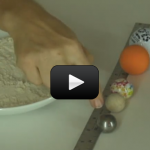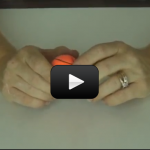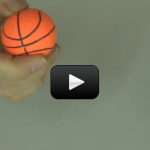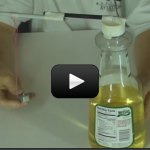All the different forms of energy (heat, electrical, nuclear, sound etc.) can be broken down into two categories, potential and kinetic energy.Think of potential energy the “could” energy. The battery “could” power the flashlight. The light “could” turn on. I “could” make a sound. That ball “could” fall off the wall. That candy bar “could” give me energy. Potential energy is the energy that something has that can be released. For example, the battery has the potential energy to light the bulb of the flashlight if the flashlight is turned on and the energy is released from the battery.
Select a Lesson
 | Mystery Toy first, and when you're done with the heavy nut from that activity, just use it in this experiment. You can easily create one of these mystery toys out of an old baking powder can, a heavy rock, two paper clips, and a rubber band (at least 3" x 1/4"). It will keep small kids and cats busy for hours. |
 | Whackapow! In this experiment, you're looking for two different things: first you'll be dropping objects and making craters in a bowl of flour to see how energy is transformed from potential to kinetic, but you'll also note that no matter how carefully you do the experiment |
 | Ball Bounce When you toss down a ball, gravity pulls on the ball as it falls (creating kinetic energy) until it smacks the pavement, converting it back to potential energy as it bounces up again. This cycles between kinetic and potential energy as long as the ball continues to bounce. |
 | Elastic Potential Energy There are many different kinds of potential energy. We've already worked with gravitational potential energy, so let's take a look at elastic potential energy. |
 | Pendulums This is a very simple yet powerful demonstration that shows how potential energy and kinetic energy transfer from one to the other and back again, over and over. Once you wrap your head around this concept, you'll be well on your way to designing world-class roller coasters. |
